Harbin Institute of Technology Fluid Mechanics Seminars
Initiated by Zijing Ding and edited by Zhen Ouyang
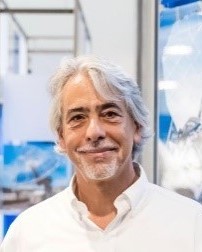
Speaker: Prof. Aldo Steinfeld, ETH Zurich, Switzerland
Date/Time:
Title: Agreed to talk. (Coming Soon)
Abstract: Agreed to talk. (Coming Soon)
Prof. Steinfeld's homepage: http://www.prec.ethz.ch/
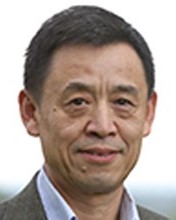
Speaker: Prof. Yuying Yan, The University of Nottingham, UK
Date/Time: Coming Soon
Title: Agreed to talk.
Abstract: Agreed to talk.
Prof. Yan Yuying's homepage: https://www.nottingham.ac.uk/news/expertiseguide/engineering/professor-yuying-yan-.aspx
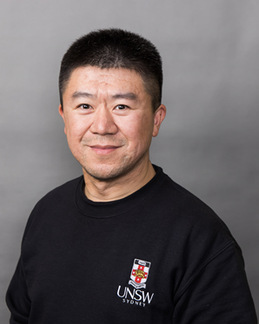
Speaker: Prof. Yansong Shen, The University of New South Wales, Australia
Date/Time: Coming Soon
Title: Modelling of reacting flows and industry applications.
Abstract: Process design and control plays a significant role in modern industries. Most processes and reactors are very complex, as they usually involve not only multiphase flows but also heat and mass transfers related to chemical reactions and their interactions – the so-called reacting flow. The operation must be optimized in order to be competitive and sustainable, particularly under the more and more demanding economic and environmental conditions. This will need continuous innovative research and development. Computer simulation and modelling, supported by online data and experiments, has emerged as an indispensable adjunct to the traditional modes of investigation for design, control and optimization of processes, reactors, and devices. In this presentation, A/Prof. Shen will report his core research on process modelling of reacting flows and the applications to a range of complex processes and reactors in conventional and emerging industries. Several examples of industry applications will be used for demonstration. The modelling works are indeed helpful to understand fundamentals and optimize & develop new, cleaner and more efficient technologies with measurable industrial outcomes.
Prof. Yansong Shen's homepage: https://research.unsw.edu.au/people/associate-professor-yansong-shen
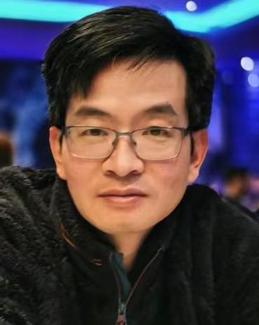
Speaker: Prof. Charley Wu, University of Surrey, U.K.
Date/Time: Coming Soon
Title: LBM-DEM Analysis Of Liquid-Solid Two Phase Flows
Abstract: Two phase flows involving liquid and solid particles are ubiquitous in nature and in engineering applications, such as sedimentation and materials transportation. Understanding the dynamics of solid particles in these flows is important to design and optimise many engineering processes. In this talk, our recent work on the development and application of a coupled lattice Boltzmann method with the discrete element method (LBM-DEM) will be presented. The model development and validation will be introduced first, following by several case studies in which the developed LBM-DEM will be used to analyse the complex flow behaviour of liquid-solid flows. These case studies include i) sedimentation of particle suspensions in cavity flows; ii) Inertia migration of planar Poiseuille flows; and iii) the impact of thermal convection on particle migration behaviours.
Prof. Charley Wu's homepage: https://www.surrey.ac.uk/people/charley-wu
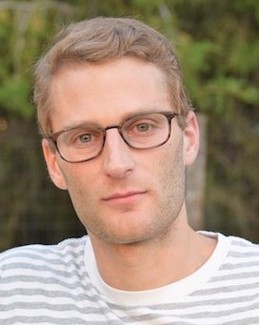
Speaker: Prof. David Goluskin, University of Victoria, Canada
Date/Time: Thursday, 22nd September 2022
Title: Heat transport in asymptotic limits of thermal convection
Abstract: Many predictions have been made about how heat transport in Rayleigh-Bénard convection and related convection models scales with the Rayleigh and Prandt numbers.Only some of these predictions are mathematically precise statements about asymptotic scaling,and in most cases the correctness of each asymptotic prediction remains an open question.I will pose some questions and conjectures about asymptotic scaling,both for turbulent convection and other (possibly unstablestates.I will survey some mathematical bounds on scalings as well as experimental and computational evidenceandwill present recent computations of two types:turbulent DNS and unstable steady states.
Prof. Goluskin's homepage: https://web.uvic.ca/~goluskin/

Speaker: Prof. Paul Linden, University of Cambridge, U.K.
Date/Time: Friday, 29th July 2022
Title: SID: the stratified inclined duct
Abstract: The stratified inclined duct (SID) is a relatively new experimental paradigm that produces a sustained shear flow between two counterflowing layers of fluid supplied by reservoirs at each end of the duct containing fluids of different density. The duct can be tilted at a small angle to the horizontal and, for a given fluid, the flow is determined by two nondimensional parameters: the angle of inclination and the Reynolds number which is fixed by the density differences between the reservoirs. We have observed four different flow regimes in SID : Laminar when the interface between the layers remains undisturbed, Wave characterised by either stationary or travelling waves on the interface, Intermittent when the flow has bursts of turbulence followed by relatively calm periods and Turbulent when the turbulence occurs throughout the duct and is sustained in time.
One of the most important questions in stratified turbulence is the efficiency with which the fluid is mixed. When the stratification is stable, with density decreasing with height, work needs to be done against gravity to move light fluid downwards and dense fluid upwards so that irreversible mixing can occur. The `tax' that this irreversible mixing imposes on the kinetic energy of the flow, the so-called `mixing efficiency' is important to parameterise mixing in ocean and climate models. In this talk I will discuss the philosophy behind SID and explain why the experiment is relevant to this issue, particularly in the context of the energetics of the flow.
The global energetics of the system is simple. The initial available potential energy in the reservoirs is converted to kinetic energy of the flow in the duct, which is ultimately converted into internal energy either by viscous dissipation and mixing of the fluids in the duct and in the reservoirs after the fluid exits the duct. I will focus on the energy transfers in the various flow regimes during the time when the mean flow within the duct is steady, while the potential energy of the reservoirs is being depleted at a constant rate, and show that this is intimately linked with hydraulic control in SID. I will also explore the issues raised in more detail in the light of three-dimensional data of the velocity and density fields obtained in the laboratory experiments and in direct numerical simulations.
Prof. Linden's homepage: https://www.damtp.cam.ac.uk/person/pfl4
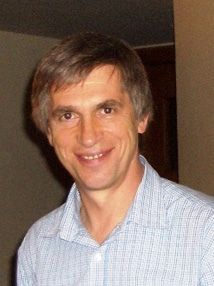
Speaker: Prof. Sergei Chernyshenko, Imperial College London, U.K.
Date/Time: Friday, 22nd July 2022
Title: Bounds for time averages: towards solving the problem of turbulence
Abstract: The problem of turbulence is the greatest unsolved problem of classical physics. It is encountered in dynamical systems so complicated that numerical calculations are too expensive. In practice, it is often sufficient to know only a few time-averaged quantities, such as the mean drag and lift. The problem of turbulence is the problem of establishing methods of obtaining this limited information at a significantly smaller cost than the cost of getting the complete solution. In practice even finding the upper and lower bounds, if close enough, for the quantity of interest is often enough. The basic ideas of how this can be done are simple. The talk will cover the basics, including applications to systems of equations with energy-conserving quadratic nonlinearities such as the Navier-Stokes equation, and then move on to new developments related to the recent advances in computer-assisted semi-algebraic optimisation.
Prof. Chernyshenko's homepage: https://www.imperial.ac.uk/people/s.chernyshenko
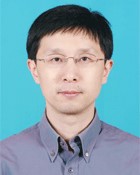
Speaker: Prof. Hang Ding, University of Science and Technology of China, China
Date/Time: Friday, 8th July 2022
Title: 界面流动模拟的研究进展:守恒清晰界面方法
Abstract: 本次报告将介绍中国科大多相界面流动课题组近期发展的系列守恒清晰界面(Conservative Sharp Interface)方法及一些相关的应用算例。复杂界面流动广泛存在于自然界和工业应用中,所涉及的界面广义上可以包括流体-流体界面和流体-固体界面。不同性质界面具有不同的界面边界条件,从而带来了流动耦合效应上的显著差异,因此界面流动问题也可归结为可变形的运动边界问题。高精度界面流动数值计算不仅依赖于体相内控制方程的高精度数值离散,更需要界面形状的高分辨率解析和界面边界条件的高精度近似,为此需要发展清晰界面方法。我们基于切割网格技术实施动网格策略,采用任意拉格朗日-欧拉(Arbitrary Lagrangian Eulerian, ALE)框架下有限体积法来离散控制方程,从而实现了界面流动的守恒计算。报告中我们将介绍守恒清晰界面方法的概念和发展现状,并给出该方法可压缩、不可压缩界面流动中的一些应用案例。
Prof. Ding's homepage: https://mech.ustc.edu.cn/2011/0326/c4590a42213/page.htm
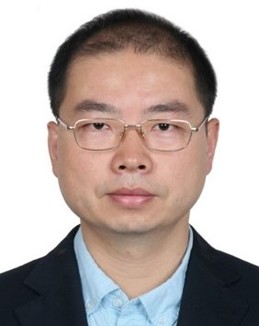
Speaker: Prof. Hengdong Xi, Northwestern Polytechnical University, China
Date/Time: Friday, 24th June 2022
Title: 几种经典流动系统中湍流结构的演化与能量、动量输运
Abstract: 湍流结构是湍流基本物理过程的流场时空分布表征,湍流结构的时空演化直接主导了流体的动量、能量和物质输运特性,因而对湍流中力和热的产生和非定常输运起着决定性的作用。在这个报告中我将介绍我们课题组最近几年在冯卡门涡旋流动、瑞利-伯纳德热对流和泰勒-库埃特流动等经典流动系统中有关湍流结构演化和湍流输运等相关的实验研究。
Prof. Xi's homepage: https://teacher.nwpu.edu.cn/hengdongxi.html
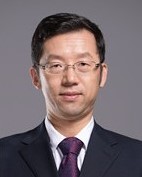
Speaker: Prof. Moran Wang, Tsinghua University, China
Date/Time: Friday, 17th June 2022
Title: 微尺度电动流体力学与科研范式思考
Abstract: 电动流动和离子输运在能源环境、地质、化工以及健康医学等领域有重要的应用背景,是流体力学与其他多学科交叉的基础问题。微尺度电动流体力学又因其特殊的尺度效应和多物理化学耦合特点,成为本领域的研究前沿和热点。报告将主要基于课题组过去十年在微尺度电动流体多尺度模拟方面的研究进展,并结合科研范式的反思,向本领域的研究生和同行介绍微尺度电动流体输运规律的“常规”、“反常”以及“危机”,并探讨未来可能出现的“革命”。
Prof. Wang's homepage: https://www.hy.tsinghua.edu.cn/info/1155/1855.htm
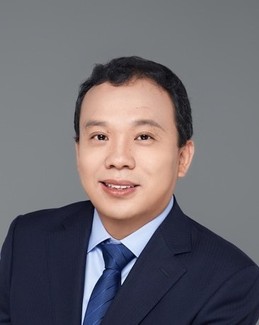
Speaker: Prof. Chao Sun, Tsinghua University, China
Date/Time: Friday, 10th June 2022
Title: 当液滴遇到湍流
Abstract: 多相多组分湍流是一种复杂的流体物理体系,其局部小尺度的液滴与总体大尺度的输运特性之间有着复杂的动态耦合关系。我们对油分散在乙醇水溶液中的双组分湍流体系的统计特性进行了研究,主要关注液滴尺寸的统计特性和体系的有效粘度。研究发现,湍流中分散相油滴平均尺寸是由边界层速度决定的,液滴尺寸的分布遵循对数正态分布,表明液滴的形成机制可能是一个典型的破碎过程,体系的有效粘度存在剪切变稀效应,表明分散相的形变特性对湍流减阻重要,相关结果对于理解气泡湍流减阻有着重要参考意义。基于液滴在湍流场中的可控相变,我们提出了一个类催化性颗粒湍流理念,通过实验直接证明其大幅增强传热的可行性,并揭示传热增强的物理机制,即相变潜热和汽泡流导致的湍流场掺混效应,相关结果可为高效传热和混合设备提供新的设计思路。
Prof. Sun's homepage: https://www.te.tsinghua.edu.cn/info/1325/1792.htm
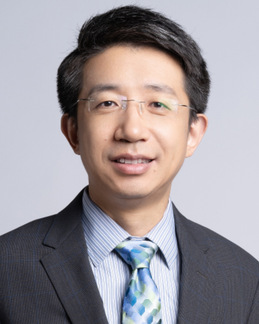
Speaker: Prof. Weiwei Deng, Southern University of Science and Technology, China
Date/Time: Friday, 27th May 2022
Title: 射流,液滴与激光
Abstract: 微尺度的液体射流和液滴是流体力学的基本研究对象,在微流控、增材制造、极紫外(EUV)光源与惯性约束核聚变(ICF)等领域有广泛应用。微尺度液体射流还兼具光纤的特性,可以与入射的连续激光或脉冲激光发生耦合诱发新的现象。报告将主要介绍近期我们在微尺度光流体方面的两项探索性的工作:(1)连续激光引发射流光流体共振,(2)纳秒脉冲激光对射流的轰击。我们发现在连续激光作用下,射流表面曲率变化结合全反射可以产生自激振荡,通过Rayleigh-Plateau失稳发生非常规则的液滴分裂。我们还发现,在纳秒脉冲激光辐照下初期产生的等离子体将极大增强光流体的耦合,使部分激光能量长程传播至喷嘴处甚至导致喷嘴表面损伤。报告还将介绍我们通过圆片上的电流体现象产生巨量泰勒锥射流的进展。
Prof. Deng's homepage: https://faculty.sustech.edu.cn/dengww/
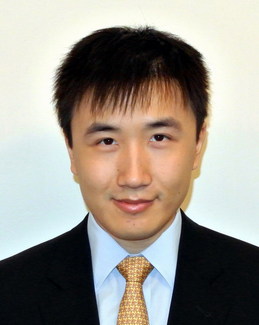
Speaker: Prof. Yue Yang, Peking University, China
Date/Time: Friday, 20th May 2022
Title: 涡面动力学几何化理论与计算方法
Abstract: 我们基于涡面场描述,研究流体运动中的特征结构与演化规律。通过将流体力学中的速度场描述转化为基于涡面的几何化描述,建立系统唯象理论,发展高效计算方法。在涡面场描述下,流动基元结构可定义为闭合纽结涡管,其表征包含轴线拓扑、轴线几何、内禀拧转三个层次。不同纽结涡管存在重联、融合、猝发、转捩等演化路径,可通过改变初始拓扑、几何、及管内精细结构调控涡管纽结的演化过程。结合Clebsch表示,多个涡面场可完整描述三维速度场,其流动演化遵循广义薛定谔方程,并已用于发展保持涡特征的快速流体计算方法。我们将结合实例展现该理论与计算方法在湍流、涡动力学、磁流体、流动可视化及计算机图形学中的应用。
Prof. Yang's homepage: www2.coe.pku.edu.cn/subpaget.asp?id=489
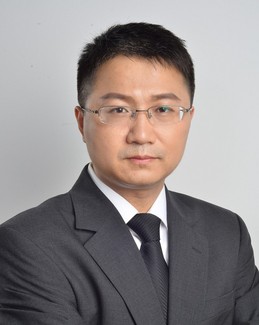
Speaker: Prof. Minping Wan, Southern University of Science and Technology, China
Date/Time: Friday, 13th May 2022
Title: 粗糙壁湍流的建模与机理研究
Abstract: 粗糙壁湍流广泛存在于各种工程和环境流动当中。和光滑壁湍流相比,粗糙的存在极大的增加了壁面摩擦阻力,并影响其流动结构和机理。本次报告将主要介绍我们最近围绕粗糙壁湍流的建模与流动机理开展的研究工作,包括:1. 粗糙壁湍流的约束大涡模拟研究:在不解析粗糙单元的情况下,我们发展了基于应力约束的粗糙壁湍流大涡模拟方法。 2. 城市冠层流动的混合层类比理论研究:我们将深层植被冠层边界层流动中的混合层类比理论首次拓展到深层城市冠层流动。3. 粗糙壁湍流中大尺度脉动的估算:我们改进了基于NS方程的估算壁湍流大尺度脉动的线性模型,并将其拓展到粗糙壁湍流。
Prof. Wan's homepage: https://faculty.sustech.edu.cn/wanmp/
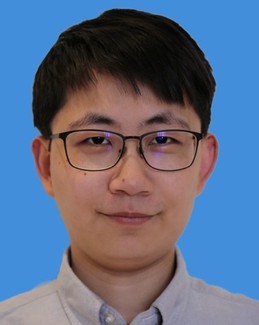
Speaker: Prof. Yi Zhou, Nanjing University of Science & Technology, China
Date/Time: Friday, 29th April 2022
Title: 尾流间歇区内非Kolmogorov -5/3能谱标度律研究
Abstract: 1941年Kolmogorov引入假设(局部各向同性、Kolmogorov 第一相似性和Kolmogorov 第二相似性)成功预测了惯性子区中存在-5/3能谱标度律。Kolmogorov提出的-5/3标度律被认为是能够描述湍流运动的一个普适性规律,是湍流理论发展的重要成果。近期研究发现当流场呈现出强非均匀性、强各向异性和强间歇性时,速度脉动能谱仍呈现强-5/3标度律。本报告将对尾流间歇区非Kolmogorov -5/3标度律的产生及其能量传递过程的研究进展进行介绍。
Prof. Yi Zhou's homepage:
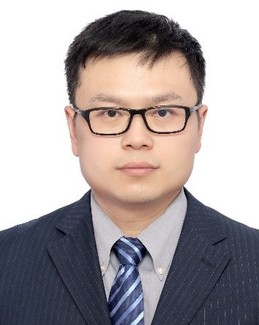
Speaker: Prof. Quan Zhou, Shanghai University, China
Date/Time: Friday, 22nd April 2022
Title: 振动热湍流的结构和输运机理研究
Abstract: 工程中广泛存在振动激励下的湍流流动,大多数流动装置或设备都处于各种各样的机械振动之中,湍流流动无法避免机械振动等外部激励的影响。机械振动引入了复杂的边界条件,将改变湍流结构生成演化规律,并对动量、能量、热量输运产生重要影响。本报告以热湍流这一典型的湍流系统为研究对象,关注机械振动等外部激励对湍流结构生成演化及输运的影响。研究发现振动激励的作用与其施加方向有关,当水平振动激励作用于热湍流系统时,会产生一种新的对流不稳定性:上下导热板的高速水平振动给边界层内部的流体施加了一个很强的剪切力,从而加速了边界层的失稳,并促发了大量热羽流结构的生成。由于羽流结构是热的最主要载体,并控制着热输运过程,其大量生成最终导致对流传热效率的大幅提高。我们的结果表明高频振动可以有效突破传统热湍流边界层限制传热的瓶颈,实现热输运效率500%的增量。反之,竖直振动激励可以有效地抑制湍流结构的生成,从而抑制湍流流动并降低对流传热效率。本研究为增强或抑制对流传热开辟了新途径,也为工程应用提供了理论指导和突破性思路。
Prof. Zhou's homepage: https://smes.shu.edu.cn/info/1033/1033.htm

Speaker: Prof. Frederic Dias, University College Dublin, Ireland
Date/Time: Monday, 6th December 2021, 4:00 pm (GMT+8)
Title: Extreme sea states in coastal regions: how large can the waves be?
Abstract: Statements in media about record wave heights being measured are more and more common. We will review some of these wave measurements and the various techniques to measure waves. Then we will explain the various mechanisms that can produce extreme waves both in wave tanks and in the ocean. We will conclude by providing the mechanism that, we believe, explains some of the famous extreme waves. Note that extreme waves are not necessarily rogue waves and that rogue waves are not necessarily extreme waves.
Prof. Dias's homepage: https://people.ucd.ie/frederic.dias/about

Speaker: Prof. Olivier Simonin, Université de Toulouse, CNRS
Date/Time: Thursday, 28th October 2021, 3:30 pm (GMT+8)
Title: Unsteady tridimensional CFD simulation of industrial gas-solid reactive flows using the N-Eulerian approach: application to gas-phase olefin polymerization reactor and chemical looping combustion (CLC)
Abstract: The Institute of Fluid Mechanics of Toulouse (IMFT) has been developing for about thirty years the unsteady 3D N-Eulerian CFD approach for simulation of industrial fluidized bed reactors. This work is being continued today, with the participation of the Laboratoire de Génie Chimique (LGC), within the more general framework of the development of mathematical modelling and numerical simulation of reactive gasparticle flows in the fluidized regime with the NEPTUNE_CFD code. The simulations, initially 2D, are now routinely performed in 3D with meshes of about ten million cells but, for exploratory work carried out in the context of major numerical challenges, with meshes containing up to one billion cells.
The skills acquired and the development of tools that have been carried out in this context, particularly in terms of intensive calculation and mathematical modelling of fluidized bed flows, are directly contributing to projects in the chemical engineering field such as gas-phase olefin polymerization or in the reactor energy field such as chemical loop combustion.

Speaker: Prof. Olivier Simonin, Université de Toulouse, CNRS
Date/Time: Monday, 25th October 2021, 3:30 pm (GMT+8)
Title: A multiscale approach for the mathematical modeling and numerical simulation of fluid-particle reactive flows in dilute and dense regimes
Abstract: The Institute of Fluid Mechanics of Toulouse (IMFT) has been developing for about thirty years the unsteady 3D CFD approach for simulation of industrial fluid-particle reactive flows in dilute and dense regime. The modelling approach is developed in the frame of N-Eulerian approach based on phase-averaged equation for the gaseous phase coupled with moment equation of the particle PDF. The corresponding equations were implemented in the NEPTUNE_CFD code developed initially for simulation of liquid-vapor multiphase flow in nuclear reactors.
These simulations carried out at the laboratory, pilot and industrial reactor scales have identified some major limitations of the N-Eulerian mathematical modeling. They have been at the origin of upstream research work carried out essentially by numerical approaches on a smaller scale: particle resolved simulation or DEM/CFD approach. For example, such approaches were used for the development of the modeling of gasparticle heat transfers in the dense regime or of wall boundary conditions for particles.
As a matter of fact, due to the large range of scales encountered and the multi-physical phenomena involved, industrial gas-solid fluidized bed reactors still represent a real challenge for mathematical modelling and numerical simulation, which benefits from the multi-scale approach allowing to bridge the link between microscopic effect occurring at the particle size and governing the inter-phase heat and mass transfer, mesoscopic effect observed for large ensemble of particles with the wall friction dominated by the of clusters and macroscopic CFD 3D simulation of the full industrial process.
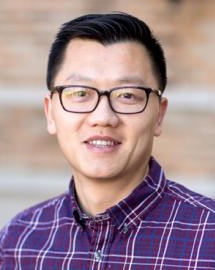
Speaker: 王贵全博士, University of Twente, Netherlands
Date/Time: Friday, 15th October 2021, 4:00 pm (GMT+8)
Title: 旋转球壳热对流中与扩散率无关的传热标度律
Abstract: 在地球及天体物理中,重力驱动的湍流热对流广泛地存在于星体的内部及外部流体中,除此之外,这些流动往往同时经受强烈的旋转作用,并对流动的结构及传热率有着至关重要的影响。然而,与以往经常采用的平板间对流系统不同,在球形系统中,旋转轴与重力方向夹角与纬度相关,导致了传热速率随纬度方向变化。本报告首先介绍与扩散率无关的传热系数标度律及应用,然后提出可依据柱状对流结构流动及传热特征将球壳沿纬度方向分为三个区域,最后详细论述了我们在中纬度区域发现的此标度律以及出现此标度律的物理机制。
此研究成果近期发表于《地球物理研究快报》:2021GL095017
Dr. Wang's homepage: https://people.utwente.nl/g.wang
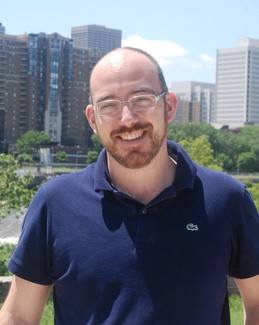
Speaker: Prof. Michele Guala, University of Minnesota, USA
Date/Time: Friday, 30th July 2021, 10:00 am (GMT+8)
Title: In-stream hydropower inspired by wind energy research: new challenges for sustainable energy conversion
Abstract: Energy production from renewable sources as wind, rivers or tidal streams poses new challenges as compared to conventional hydro-power or fossil-fuel plants. Not only the flow impinging on the energy extracting device is varying in time but also the boundary conditions may be subject to slow variations. One example is the scour-depositional patterns occurring around instream horizontal axis turbines in rivers, the effect of migrating sediment waves approaching the turbine rotor plane, and the morphodynamic equilibrium of the river bed around turbine arrays. However, such an interaction is not necessarily problematic and could actually be functional for a better management of fluvial systems subject to excessive erosion. In the course of this seminar I will present some of my latest research using basic, fundamental fluid mechanics and laboratory experiments on wind and fluvial turbines to envision and model sustainable and renewable energy systems.
The work of Craig Hill, Mirko Musa, Michael Heisel, Marco Redolfi and Bingzheng Dou is gratefully acknowledged.
Prof. Guala's homepage: https://cse.umn.edu/cege/michele-guala
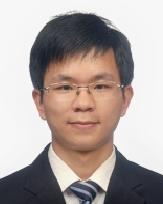
Speaker: Prof. Kang Luo, Harbin Institute of Technology, China.
Date/Time: Tuesday, 27th July 2021, 4:00 pm (GMT+8)
Title: Flow instability and heat transfer enhancement in electroconvection
Abstract: The flow motion driven by the Coulomb force exerted by the electric field on free space charges is fundamental problems in Electro-Hydro-Dynamics (EHD). Such flow plays an important role in a wide range of applications in industrial processes, such as EHD pumps, EHD turbulent mixer and electrostatic precipitators. In general, flow control and heat transfer enhancement with electricity-based techniques has some unique advantages, such as no moving mechanical parts, rapid and smart control, and low power consumption and noise.
In this talk, I will review the last five years works on EHD of our group, including the theoretical analysis of rich linear and nonlinear instabilities in EHD, lattice Boltzmann modeling of EHD, Cellular flow patterns and their subcritical bifurcation phenomena of EHD, solid-liquid and solid-gas two phase EHD problems, electro-thermo-convection in non-Newtonian dielectric liquid.
Prof. Luo's homepage: http://homepage.hit.edu.cn/LuoK?lang=zh
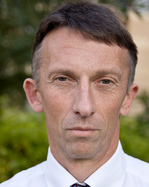
Speaker: Prof. Peter Haynes, University of Cambridge, U.K.
Date/Time: Thursday, 22nd July 2021, 4:00 pm (GMT+8)
Title: Eddy-driven beta-plane jets -- a fundamental atmosphere-ocean phenomenon
Abstract: The phenomenon that turbulence/forced eddying motion in a single-layer or multi-layer stratified system on a beta-plane leads to the formation of persistent jets in the longitudinal direction has attracted great attention over the last 40 years. (A beta-plane is a simple model device to represent the latitudinal variation in the vertical component of the planetary rotation.) It is relevant to midlatitude jets in the atmosphere, multiple jets in the Antarctic Circumpolar Current and to flows on outer planets in the Solar System.
I will review some of the ideas and models that have been formulated to explain the formation of the jets and to account for their dynamical and transport properties. I will then focus on the particular topic of time variability -- the jets are not steady but exhibit a rich range of time variability which depends on the external parameters -- and then discuss the phemonenology of the variability and some of the physical ingredients that seem important in determining its characteristics.
Prof. Haynes's homepage: http://www.damtp.cam.ac.uk/user/phh/index.html
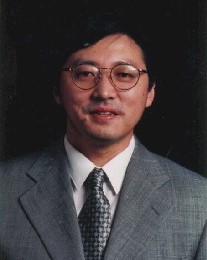
Speaker: Prof. Charles Chun Yang, Nanyang Technological University, Singapore
Date/Time: Tuesday, 20th July 2021, 4:00 pm (GMT+8)
Title: Electrokinetic Flows in Microchannels: Modeling, Characterizations and Microfluidic Applications
Abstract: Microfluidic devices consist of microchannels and microstructures. The past two decades have seen academic frenzy for microfluidics research that involves multidisciplinary fields such as engineering, physics, chemistry, biology, life science, etc. The fast development of microfluidics mainly lies in that microfluidic devices promise to offer a viable micro-fluidic platform for miniature medical, environmental and national security diagnostic kits. Compared to existing laboratory-scale instruments, microfluidics has numerous advantages, including inexpensive, portable, disposable, multi-functional, less sample consumption and waste generation, ease of operation, fast processing, and full automation. Scaling analysis shows the conventional pressure driven flows do not scale well with miniaturization, and often require complicated off-chip components such as pumps, connectors, tubings, etc. In contrast, electrokinetic driven flows that employ DC or AC electric fields to pump, mixing, split liquid buffers based on electroosmosis, enjoy numerous advantages such as no moving parts, ease of control, well integration with standard microelectronics and fabrication methods. In this talk, I will present the fundamental aspects of both linear and nonlinear electrokinetic flows, including modeling, analyses, and characterizations as well as their microfluidic applications.
Prof. Yang's homepage: https://www3.ntu.edu.sg/home/mcyang/index.html
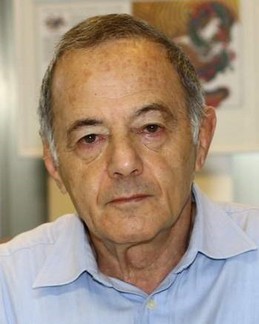
Speaker: Prof. Victor Steinberg, Weizmann Institute of Science, Israel
Date/Time: Thursday, 15th July 2021, 3:00 pm (GMT+8)
Title: New direction in elastic instability and turbulence in straight channel viscoelastic flow
Abstract: After short introduction into polymer solution hydrodynamics, I shortly describe the main results on elastically driven instabilities and elastic turbulence in flow geometries with curvilinear streamlines, about prediction of elastic waves and absence of such waves in these flows. Then I switch to the main subject of the talk, namely recent development in parallel shear flows of polymer solutions proved to be linearly stable for the last about 50 years. We discovered in a straight channel flow elastically driven instability, elastic turbulence, elastic waves, and re-laminarization. In this regard, a short discussion of normal versus non-normal instabilities in such flows I give on the end.
Prof. Steinberg's homepage: https://www.weizmann.ac.il/complex/steinberg/
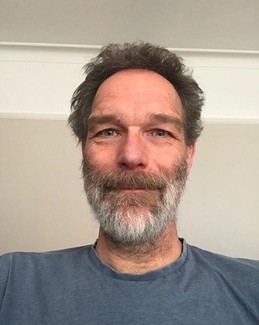
Speaker: Prof. Matthias Heil, University of Manchester, U.K.
Date/Time: Tuesday, 13th July 2021, 4:00 pm (GMT+8)
Title: Flows past cylinders: Are the transitions between different flow regimes caused by a continuous evolution or by bifurcations?
Abstract: Solutions to the Navier-Stokes equations often go through a sequence of distinct regimes, with the flow field becoming more 'complicated' as the Reynolds number increases. These changes may occur via (i) bifurcations of the underlying solutions of the Navier-Stokes equations, or (ii) a continuous evolution of the 'complicated' flow field (with quantifiable, discrete changes to its topology).
We analyse the interplay between these two, in principle distinct, mechanisms in the context of flows past circular cylinders. If the cylinder is stationary the flow undergoes a Hopf bifurcation at a Reynolds number of approximately 46, resulting in the formation of the famous von Kármán vortex street -- a time-periodic flow in which vortices are shed downstream. While this suggests that the change to the flow topology arises via mechanism (i) we show that the transition from steady to time-periodic flow (through the Hopf bifurcation) and the formation of individual vortices are in fact distinct events that occur at slightly different Reynolds numbers.
When the cylinder performs forced oscillations transverse to the flow direction, the vortex-shedding pattern becomes significantly more complex, leading to the formation of so-called 'exotic wakes' whose character is controlled by the Reynolds number as well as the period and amplitude of the cylinder's motion. While it has generally been assumed that the transition between different wake patterns in response to changes in the amplitude occurs via mechanism (ii) we show that they are actually associated with a spatio-temporal symmetry-breaking bifurcation of the time-periodic flow.
Prof. Heil's homepage: https://personalpages.manchester.ac.uk/staff/matthias.heil/
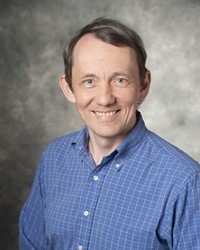
Speaker: Prof. Vladimir S. Ajaev, Southern Methodist University, USA
Date/Time: Thursday, 8th July 2021, 10:00 am (GMT+8)
Title: Levitation and self-organization of microscale droplets
Abstract: Levitating droplets of liquid condensate are known to organize themselves into highly ordered arrays over hot liquid-gas interfaces. Our recent experimental observations show similar behavior of droplets over a dry heated solid surface at temperatures far below the Leidenfrost point. Mathematical models are developed that predict the mechanisms of both droplet levitation and inter-droplet interaction leading to pattern formation over the dry surface; the models are shown to be in good agreement with the experimental data. Using the insights from the new experiments, we are able to resolve some long-standing controversies pertaining to the mechanism of levitation of droplets over liquid-gas interfaces and find the levitation height as a function of droplet size. Finally, by studying trajectories of levitating droplets near the contact line region we are able to obtain velocity profiles for local gas flow there.
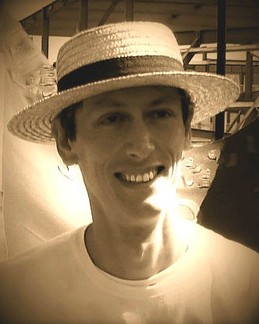
Speaker: Dr. Ashley P. Willis, University of Sheffield, U.K.
Date/Time: Tuesday, 6th July 2021, 4:00 pm (GMT+8)
Title: Nonlinear optimisation of transition in pipe flow.
Abstract:The transition to turbulence in pipe, Couette and channel flows is particularly interesting, as it is possible to have either laminar flow or turbulence at the same flow rate: If the laminar flow is given a (sufficiently small) perturbation, then it will return to the laminar state; similarly, turbulence is likely to remain if perturbed.
Two related questions naturally arise: 'What is the minimal perturbation to laminar flow that causes transition to turbulence?' and 'What is the minimal perturbation to turbulence [here via a body force] that can cause the flow to laminarise?'
These questions are closely related to control problems, where we might want to enhance turbulence to encourage mixing, or weaken turbulence to reduce drag. They can be formulated as similar nonlinear variational problems, in principle. Several issues arise in practice, but optimal perturbations and forces of consistent structure can nevertheless be determined.
Dr. Willis's homepage: http://apwillis.staff.shef.ac.uk/
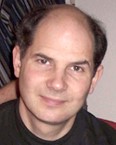
Speaker: Prof. Jens G. Eggers, University of Bristol, U.K.
Date/Time: Friday, 2nd July 2021, 4:00 pm (GMT+8)
Title: Theory of bubble tips in strong viscous flows
Abstract:A free surface, placed in a strong viscous flow (such that viscous forces overwhelm surface tension), often develops ends with very sharp tips. We shown that the axisymmetric shape of the ends, non-dimensionalized by the tip curvature, is governed by a universal similarity solution. The shape of the similarity solution is close to a cone, but whose slope varies with the square root of the logarithmic distance from the tip.
Pursuing the calculation of the tip similarity solution to next order, we demonstrate matching to previous slender-body analyses, which fail near the tip. This allows us to resolve the long-standing problem, first raised by G.I. Taylor, of finding the global solution of a bubble in a strong hyperbolic flow. Our results are shown to agree in detail with experiment as well as full numerical simulations of the Stokes equation.
Prof. Eggers's homepage: https://people.maths.bris.ac.uk/~majge/

Speaker: Prof. Tim Colonius, California Institute of Technology, USA
Date/Time: Tuesday, 29th June 2021, 10:00 am (GMT+8)
Title: Turbulence structure and modeling in the frequency domain
Abstract: Amongst many available data-driven modal decompositions of utility in fluid mechanics, the frequency-domain (spectral) version of the proper orthogonal decomposition (SPOD) plays a special role in the analysis of stationary turbulence. SPOD modes are optimal in expressing structures that evolve coherently in both space and time, and they can be regarded as optimally-averaged DMD modes. Importantly, the SPOD spectrum is also related to the resolvent spectrum of the linearized dynamics and examination of the relationships between the SPOD and resolvent modes yields information about how coherent structures are forced by nonlinear interactions amongst coherent and incoherent turbulence. We discuss the application of these tools to analyze and model turbulence in high-speed jets and boundary layers. We highlight recent developments including (a) utilizing eddy-viscosity models in resolvent analysis to enable RANS-based prediction of coherent structures, and (b) nonlinear extensions of resolvent analysis to discover worst-case disturbances for laminar-turbulent transition, and (c) the development fast spatial marching methods for large-scale resolvent problems.
Prof. Colonius's homepage: https://eas.caltech.edu/people/colonius
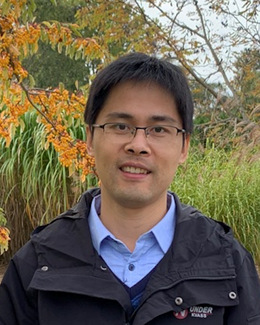
Speaker: Dr. Baole Wen, University of Michigan, Ann Arbor, USA
Date/Time: Tuesday, 15th June 2021, 10:30 am (GMT+8)
Title: Asymptotic Transport in Strongly Nonlinear Rayleigh–Bénard Convection
Abstract: Rayleigh–Bénard convection plays a significant role in important applications ranging from microfluidics engineering to climate science and astrophysics, and has been studied extensively to gain insights into the development of turbulence. A key feature of Rayleigh–Bénard convection is heat transport, and predicting transport for large applied temperature gradients in the strongly nonlinear regime remains a major challenge for the field. Since the 1960s two distinct scaling theories, i.e., the classical scaling theory and the ultimate scaling theory, have contended to quantitatively characterize the strongly nonlinear regime, yet no clear winner has emerged.
The computations reported here offer new evidence for one of these theories and suggest a novel way to resolve the conundrum. Our tactic is to study relatively simple time-independent states called rolls and compare heat transport by these rolls with that of turbulent convection. These steady rolls are not typically seen in large-Rayleigh-number simulations or experiments because they are dynamically unstable. Nonetheless, they are part of the global attractor for the infinite-dimensional dynamical system defined by Rayleigh’s model, and recent results suggest that steady rolls may be one of the key coherent states comprising the ‘backbone’ of turbulent convection. The new numerical technique proposed here pushes the computations of steady solutions much further up to Rayleigh number 1014, yielding clear asymptotic scalings for Rayleigh–Bénard convection between no-slip boundaries. We observe that rolls of the horizontal periods that maximize the heat flux at each Rayleigh number display classical scaling asymptotically. Moreover – and perhaps somewhat surprisingly – aspect ratio optimized steady convection rolls transport more heat than turbulent experiments or simulations at similar parameters.
Joint work with Charles R. Doering (University of Michigan, USA) and David Goluskin (University of Victoria, Canada).
Prof. Doering's homepage: https://lsa.umich.edu/cscs/people/core-faculty/doering.html
Dr. Wen's homepage: https://lsa.umich.edu/math/people/postdoc-faculty/baolew.html
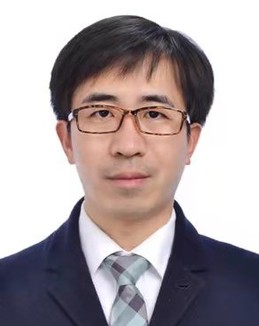
Speaker: Prof. Xuerui Mao, Beijing Institute of Technology, Beijing, China
Date/Time: Friday, 11th June 2021
Title: Assimilation of fluid flow data.
Abstract: Data assimilation has grown to be a significant branch of fluid mechanics. In model based assimilation, considering the measured wall shear stress in a flat plate flow as the input, the incoming free-stream turbulence can be traced. Subsequently, a large part of the overall flow over the plate can be recovered and the development to the laminar-turbulence transition stage can be predicted. In data based assimilation, flow fields from various sources with various accuracy can be merged in a Gaussian Regression scheme to combine the merit of each individual set of data and mitigate their drawbacks. Here we consider the experimental data, commonly regarded as accurate but sparse, and the simulation data, which is dense but (sometimes!) inaccurate. By merging spatially and temporally discontinuous experimental data and continuous simulation one, we obtain a continuous high-fidelity set of data, shedding lights to a new relationship between experiments and simulations: rather than using one to validate the other, they can be combined! The same idea is then applied to merge DNS, LES and RANS data in an airfoil flow, aiming at using a small set of expensive and accurate data to tune the cheap and dirty one.
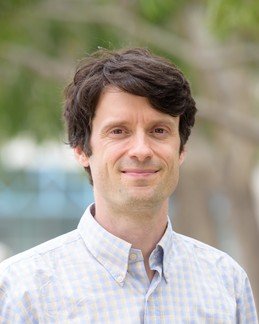
Speaker: Prof. Jan Kleissl, University of California, San Diego, USA
Date/Time: Thursday, 10th June 2021, 9:00 am (GMT+8)
Title: Urban Microclimatology: Implications of Realistic Urban Heating on Wind Flow and Dispersion
Abstract:As urbanization progresses, microclimate modifications are also aggravated, and more comprehensive and advanced methods are required to analyze the increasing environmental concerns. Among various factors that alter urban environments from undisturbed climates, street level air pollution due to vehicular exhausts is of major concern and is significantly affected by atmospheric motion and stability. Thermal forcing is shown to play an important role in determining flow patterns and pollutant dispersion in built environments, yet numerical studies of dispersion at microscale in urban areas are limited to simplified and uniform thermal conditions and the analyses on the effect of realistic surface heating are scarce.
To address this shortcoming, a detailed indoor-outdoor building energy model is employed to compute heat fluxes from street and building surfaces, which are then used as boundary conditiion for a Large-Eddy Simulation model. In comparison with previous studies, our model considers the transient non-uniform surface heating caused by solar insolation and inter-building shadowing, while coupling the indoor-outdoor heat transfer, flow field and passive pollution dispersion. Series of fluid flow and thermal field simulations are then performed for an idealized, compact mid-rise urban environment, and the pollution dispersion as well as turbulent exchange behavior in and above buildings are investigated. Additionally, a potentially universal characterization method of the flow field under realistic surface heating is evaluated, which aims to expand the results into a wider range of scenarios and investigate the potential correlations for various parameters of interest.
Prof. Kleissl's homepage: https://cer.ucsd.edu/_profile-pages/kleissl.html
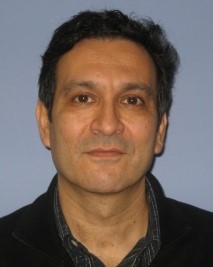
Speaker: Prof. Demetrios Papageorgiou, Imperial College London, U.K.
Date/Time: Tuesday, 8th June 2021, 6:30 pm (GMT+8)
Title: Waves on the Microscale: Order, Chaos and its Control
Abstract:I will give an overview of the type of mathematics that needs to be invoked to study nonlinear waves in small scale geometries. Applied mathematicians are very familiar with large scale waves, such as water waves, and the activities that emanate from familiar models like the celebrated Kortweg de-Vries equation (a google search of “Kortweg de-Vries” comes up with 650,000 hits!). At large scales things are gravity driven and viscosity plays a secondary role and can be ignored. On the microscale, however, gravity’s gravity is typically diminished and viscosity rules. Interfaces between immiscible fluids (i.e. waves) are quite happy to stay uniform and trundle along in their viscous morass. To do engineering on the microscope we need to drive them out of their equilibrium. One way to do this is by using external electric or magnetic fields, and I will begin with an overview of the mathematical models that emerge from such interventions - they involve a crucial coupling between the Navier-Stokes equations and the Maxwell equations in the right limit. The result is a host of PDEs that are derived asymptotically. Interestingly, these PDEs can produce chaotic solutions (we have rigorous proofs of this) even at zero Reynolds numbers. After deriving some of the models I will present computations of their solutions (mostly in the form of movies) and also address theoretically the problem of control and optimal control of such systems showing that this is possible and opens a gateway to useful physical exploitations.
Prof. Papageorgiou's homepage: https://www.imperial.ac.uk/people/d.papageorgiou
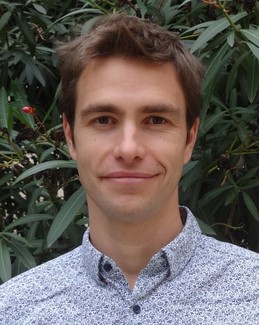
Speaker: Dr. Louis-Alexandre Couston, Université de Lyon, France
Date/Time: Friday, 4th June 2021, 3:30 pm (GMT+8)
Title: Subglacial hydrodynamics. Topography of ice-water interfaces.
Abstract:This talk will discuss two research topics related to ice-ocean interactions. The first topic will focus on the 400 subglacial lakes trapped beneath the Antarctic ice sheet, which are extreme, isolated, yet viable habitats for microbial life. The physical conditions within subglacial lakes are critical to evaluating how and where life may best exist. In this talk, I will demonstrate that Earth’s geothermal flux provides efficient stirring of Antarctic subglacial lake water. I will show that most lakes are in a regime of vigorous turbulent vertical convection, enabling suspension of spherical particulates with diameters up to 36 micrometers, which is essential for biome support within the water column. The second part of the talk will discuss our recent effort to model ice-ocean interactions explicitly. We have derived a phase-field model, which can be used to simulate the turbulent dynamics of water and the diffusion of heat in ice layers simultaneously, enabling to track the movement of the ice-ocean interface due to phase changes. I will show that a turbulent shear flow promotes the spontaneous generation of channels and keels in the ice aligned with the direction of the mean flow and discuss some of the implications of our work for polar ocean modelling.
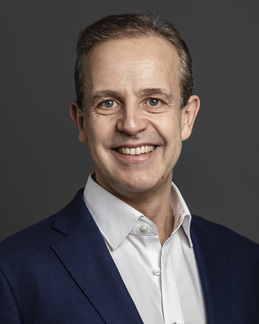
Speaker: Prof. George Haller, ETH Zurich, Switzerland
Date/Time: Thursday, 3rd June 2021, 4:00 pm (GMT+8)
Title: Material Barriers to the Transport of Momentum and Vorticity in Turbulence
Abstract:I will give an overview of the type of mathematics that needs to be invoked to study nonlinear waves in small scale geometries. Applied mathematicians are very familiar with large scale waves, such as water waves, and the activities that emanate from familiar models like the celebrated Kortweg de-Vries equation (a google search of “Kortweg de-Vries” comes up with 650,000 hits!). At large scales things are gravity driven and viscosity plays a secondary role and can be ignored. On the microscale, however, gravity is typically diminished and viscosity rules. Interfaces between immiscible fluids (i.e. waves) are quite happy to stay uniform and trundle along in their viscous morass. To do engineering on the microscope we need to drive them out of their equilibrium. One way to do this is by using external electric or magnetic fields, and I will begin with an overview of the mathematical models that emerge from such interventions - they involve a crucial coupling between the Navier-Stokes equations and the Maxwell equations in the right limit. The result is a host of PDEs that are derived asymptotically. Interestingly, these PDEs can produce chaotic solutions (we have rigorous proofs of this) even at zero Reynolds numbers. After deriving some of the models I will present computations of their solutions (mostly in the form of movies) and also address theoretically the problem of control and optimal control of such systems showing that this is possible and opens a gateway to useful physical exploitations.
Prof. Haller's homepage: http://www.georgehaller.com/about/index.html
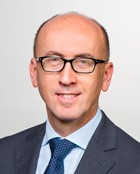
Speaker: Prof. Carlo L. Bottasso, TUM, Germany
Date/Time: Wednesday, 2nd June 2021, 4:00 pm (GMT+8)
Title: Understanding and controlling wind farm flows
Abstract:Wakes produced by upstream wind turbines have a profound influence on the performance of downstream machines. In fact, compared to clean isolated conditions, waked turbines experience a lower power output and increased loading, which in turn create cascading effects on operation & maintenance (O&M) and lifetime. Understanding and affecting wakes are extremely challenging scientific problems with very practical and concrete implications clearly felt by industry. Probably one of the most direct indications of the impact of wakes outside of the scientific literature is given by the press announcement issued in October 2019 by Ørsted (formerly DONG), the largest energy company in Denmark. In this striking announcement, Ørsted warned investors that it was not able to meet its long-term financial targets because “... of the negative impact … across our asset portfolio of … wake effects”. In addition, Ørsted stated that “… wake effects is likely to be an industry-wide issue”. This announcement had a major impact on the scientific and technical community, and sounds as a wake-up call: wake effects are one of the main priorities that need to be faced in the field of wind energy.
However, the effects of wakes go well beyond power capture and loading. In fact, with an increased penetration of wind in the energy mix, it has become necessary for wind energy systems to provide increased flexibility and services to the grid, including active power control, the provision of reserves, and the integration with storage and other power generation units. Here again, understanding and controlling wakes plays a central role in the ability to deliver such services, which build on complex behaviors such as maintaining enough reserves to hedge against wind fluctuations, or distributing fatigue damage and/or actuator duty cycle according to the status of the individual assets and their components.
In this talk we will review the recent progress in the understanding and modeling of wakes, and the latest achievements in the field of wind farm flow control. We will take the opportunity offered by some of these topics to present highlights from the work developed by the Wind Energy Institute at TUM, spanning from to digital technologies for smart operation of turbines and farms, to validation and testing.
Prof. Bottasso's homepage: https://www.professoren.tum.de/en/bottasso-carlo-l
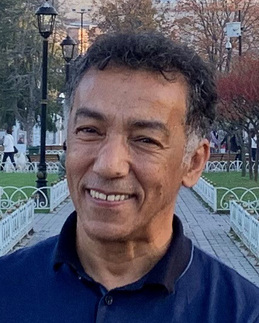
Speaker: Prof. Mohamed Farhat, EPFL, Switzerland
Date/Time: Thursday, 27th May 2021, 3:00 pm (GMT+8)
Title: On cavitation phenomenon: From single bubble dynamics in still liquid to cavitation in turbulent flows
Abstract:The cavitation phenomenon is an issue of a long-lasting interest because of the powerful phenomena associated with the collapse of vapor bubbles. In hydraulic machinery, cavitation is always associated with severe erosion and drop in hydrodynamic performances. However, if tuned properly, cavitation can be useful in a variety of application, such as cleaning, food processing and biomedicine. In the present lecture, I will give an overview of the research performed at EPFL on the cavitation phenomenon. I will show how the case of a single bubble dynamics reveals a rich physics and let us better understand the extraordinary power of collapsing bubbles. I will then present some results related to cavitation in flowing water around a hydrofoil. I will focus on the tip vortex cavitation and the role of the gas content on the inception and development of such cavitation. I will present some promising techniques for flow control that we have developed for the mitigation of tip vortex cavitation.
Prof. Farhat's homepage: https://people.epfl.ch/mohamed.farhat
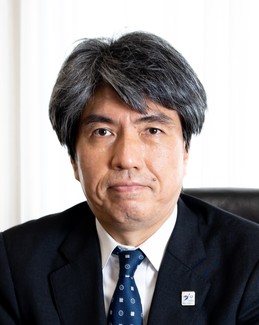
Speaker: Prof. Genta Kawahara, Osaka University, Japan
Date/Time: Tuesday, 25th May 2021, 10:00 am (GMT+8)
Title: Ultimate heat transfer in convective and sheared turbulence
Abstract:Direct numerical simulations have been performed for turbulent heat transfer in thermal convection and shear flow between parallel permeable walls, on which the transpiration velocity is assumed to be proportional to the local pressure fluctuations (Jimenez et al. 2001 J. Fluid Mech. 442, 89-117). Turbulent heat transfer has been found to be substantially enhanced by the appearance of large-scale turbulence structures (large-scale thermal plumes in convection or large-scale spanwise rolls in shear flow) arising from the wall permeability. At high Rayleigh numbers or high Reynolds numbers we have achieved the ultimate heat transfer represented by a wall heat flux being independent of thermal conductivity, although the heat transfer on the wall is dominated by thermal conduction. The key to the achievement of the ultimate heat transfer is interpreted in terms of significant heat transfer enhancement by large-scale intense turbulence with the length scale of the order of the wall distance and with the velocity scale comparable to the buoyancy-induced terminal velocity in convection or the bulk-mean velocity in shear flow without flow separation from the permeable walls.
Papers in support of Prof. Kawahara's webinar: https://doi.org/10.1017/jfm.2020.867
Prof. Kawahara's homepage: https://rd.iai.osaka-u.ac.jp/en/187bee8bc45e082e.html
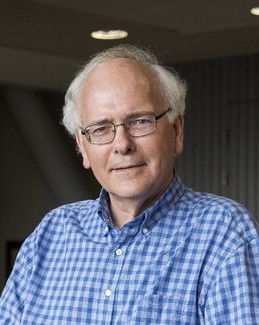
Speaker: Prof. Sjoerd W. Rienstra, Eindhoven University of Technology, Netherlands
Date/Time: Thursday, 20th May 2021, 3:00 pm (GMT+8)
Title: Sound Propagation in Shear Flow – Adiabatic Invariants of Slowly Varying Modes
Abstract:Adiabatic invariants are the holy grail in a WKB analysis of waves in a slowly varying medium. If one exists, it serves as an exact integral for the slowly varying mplitude of the wave. This is no exception for acoustic modes in a slowly varying duct with slowly varying mean flow.
Adiabatic invariants are invariants under slow variation, not any variation. Their existence ensues sometimes, but not only, from the more stringent conservation of energy. Acoustic energy in mean flow is not always conserved: it is conserved in potential flow, but not in vortical (i.e. shear) flow where the acoustic field exchanges energy with the mean flow. Adiabatic invariants are therefore common for modes in slowly varying potential flows, but so far unknown in sheared flows.
We found that: (i) in 2D shear flow the modes satisfy in general an incomplete adiabatic invariant; (ii) this reduces to a complete one for linear shear flow. This result makes the WKB approximation for a mode in a slowly varying duct almost as simple as the solution for a mode in a straight duct.
Papers in support of Prof. Rienstra's webinar: https://doi.org/10.1017/jfm.2020.687
Prof. Rienstra's homepage: https://www.win.tue.nl/~sjoerdr/
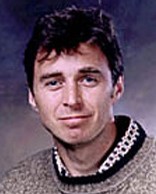
Speaker: Prof. Neil J. Balmforth, University of British Columbia, Canada.
Date/Time:
Title: Declined.
Abstract: Declined.
Prof. Neil J. Balmforth: https://secure.math.ubc.ca/~njb/